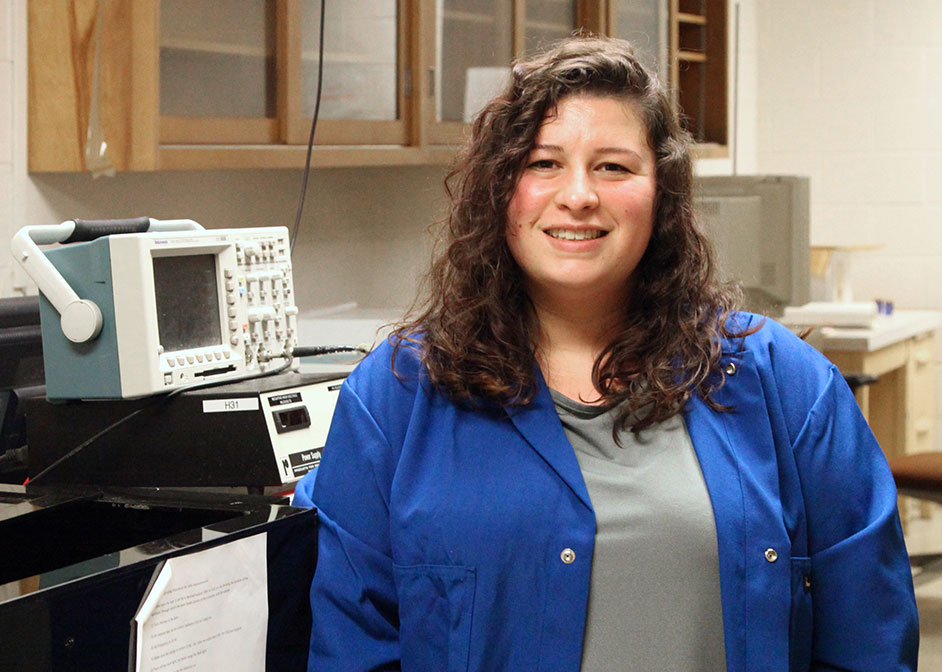Opportunity Provides Doctoral Student With Unique Skills to Enter Industry
The scarcity of large crystal growth in U.S. labs was one of the reasons Stephanie Araiza, a chemistry Ph.D. student at the University of Houston, chose to pursue this field in solid-state and materials chemistry. She is studying with professor of chemistry P. Shiv Halasyamani as her advisor at the UH College of Natural Sciences and Mathematics.

“As far as I know, we are the only lab in the United States that does large crystal growth,” she said. “We don’t have a lot of competition in the U.S., in terms of our non-linear optics projects.”
Araiza received a $49,623 grant from the National Science Foundation’s Alliances for Graduate Education and the Professoriate program to work on nitrate non-linear optical (NLO) materials. The grant, a supplement to Halasyamani’s current NSF grant, will fund Araiza’s studies. It can be renewed for three years.
The NSF program aims to improve the pathway to “the professoriate and success for historically underrepresented minority doctoral students, postdoctoral fellows and faculty,” according to the NSF website.
Focus of the Grant
Araiza began her career as a materials chemistry researcher while an undergraduate student at California State University, Long Beach, and later, as a master’s student, completed a thesis on phosphor materials, also at CSU, Long Beach.
“It was something I really enjoyed,” she said. “It grabbed my attention. I thought, this is interesting; I have a lot of opportunities in this field, let’s take it.”
With the grant, Araiza will lead the design and synthesis of new, nitrate nonlinear optical (NLO) materials and also focus on exploratory synthesis, crystal growth, and characterization of NLO materials, using low-temperature solid-state and solvothermal techniques.
The aim for developing NLO materials is to be able to generate wavelengths of light that cannot be generated through a different source, or to more easily produce certain wavelengths. Currently, one of the most prominent directions is to make NLO materials that generate wavelengths of ultraviolet radiation to use for applications like photolithography and semiconductor manufacturing.
Researching these materials will provide Araiza with extraordinary opportunities once she finishes her Ph.D., planned for spring 2023.
Araiza plans to pursue an industry career, but the skills she is gaining as a Ph.D. student in Halasyamani’s lab will make her a strong applicant in both academia and industry.
Halasyamani said he feels fortunate to have had Araiza join his research group.
“She was a highly recruited student, who came to UH with a great deal of research experience,” he said. “Because of this, I have been able to give her far more freedom than the typical graduate student. Stephanie is an exceptionally hard-working student who is leading this research project and simultaneously training younger students.”
Araiza has enjoyed working with Halasyamani, who she describes as an advisor who is there to help but does not micromanage or constantly check on students.
Overall, she said, the students at the University of Houston have been very kind, and “there is not a weird competition that you see at other places. People do their own thing and succeed. That’s what I really like about being here.”
- Rebeca Trejo, College of Natural Sciences and Mathematics